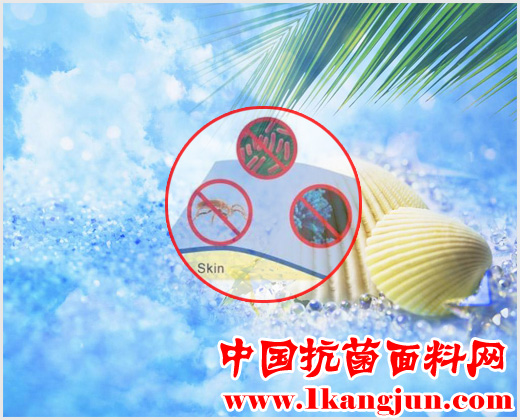Talking about the production method of antibacterial textile
Talking about the production method of antibacterial textile
Although there are many types of antibacterial textiles, the production methods can be roughly classified into three types.
Blending spinning

The blend spinning method is a method in which an antibacterial agent is added to a fiber production polymerization stage or a spinning dope to prepare an antibacterial fiber, and then the antibacterial and deodorant fiber is directly Woven into an antibacterial fabric. The advantage of this method is that there is no need for finishing and the cost is lower.
Functional finishing
The functional finishing method is a method of post-processing a textile using an antibacterial finishing agent. The antibacterial agent is combined with the fiber in the finishing process to impart an antibacterial function to the textile. This method can produce pure natural fiber or purified synthetic fiber products, as well as blended fiber products. This method has wide adaptability for producing antibacterial textiles.
Compound processing
The composite processing method firstly adds an antibacterial agent to the spinning material to form an antibacterial fiber, and then blends or interlaces the antibacterial and deodorant fiber with the ordinary fiber into a fabric, and then adds an antibacterial finishing agent capable of combining with ordinary fibers in the finishing process of the fabric printing and dyeing. And then made into a variety of antibacterial textiles.
By comparing experiments on a large number of antibacterial fibers and fabrics, it was confirmed that the antibacterial durability of the antibacterial cotton fabric was significantly better than that of the antibacterial synthetic fiber. The reason for the analysis is mainly due to the fact that the antibacterial agent of the synthetic fiber core cannot migrate to the fiber cortex and does not have an antibacterial effect. At the same time, the amount of antibacterial agent added should not be too large, otherwise it will seriously affect the physical index of antibacterial synthetic fiber. Thereby, the antibacterial effect and the range of use of the antibacterial synthetic fiber are greatly limited. The best way to solve this problem is to make the antibacterial fiber of the sheath-core structure - that is, to add an antibacterial agent to the skin layer, and the core layer is a common fiber. Therefore, most of the currently widely used antibacterial textiles are made by post-finishing methods, accounting for about 80% of the total.
China Antibacterial Fabric Network Latest Antibacterial Fabric Information
ZeroClipboard.setMoviePath('/plugin/copytofriends/ZeroClipboard.swf'); var clip = new ZeroClipboard.Client(); clip.setHandCursor(true); clip.setText(" Talking about antibacterial textile production methods http://www. 1kangjun.com/post484/"); clip.addEventListener('complete', function(client,text){ alert("Successfully copy this article to the clipboard!"); }); clip.glue('copytofriends');
SUZHOU WINTEX TEXTILE CO.,LTD. , https://www.szwintextextile.com
